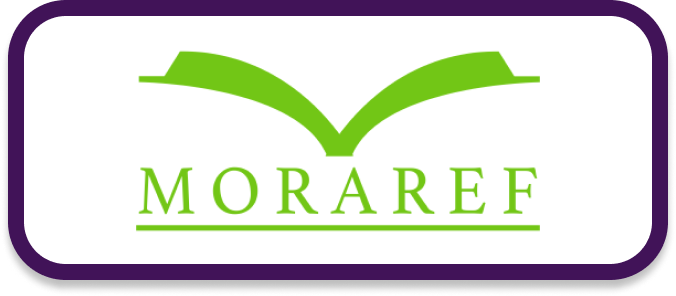PERAN PEREMPUAN DALAM KONSERVASI AIR RUMAH TANGGA
Abstract
The availability of world freshwater that can be used by humans is very small in number compared with many people's estimates, especially for those living in regions with abundant of water. Water conservation should be done according to Islamic advice, then considering other users' water needs, maintaining water quality, saving energy, and considering increasing water demand as per population growth. Prior to the scarcity and water damage, water conservation needs to be done in non-domestic and domestic / household levels. Household water conservation can be done through behavioural change and technological change. This study focuses on changes in household behavior in water conservation related to the role of women. A qualitative approach is applied in this study by conducting interviews with resource persons who play a significant role in environmental issues and some are housewives. The results show that household water conservation can be done in simple and easy ways, for example by monitoring water use by children, choosing water-saving ways of gardening, washing clothes at once, and so on. The role of women in household water conservation is significant because women are the main users of water and women can educate children early on. The government is expected to arrange strategies to promote water conservation on a household scale by educating and disseminating it to women's associations at the village level.
Keywords :
Keywords
Full Text:
PDFReferences
AR, M. Q. H. (2015). Rethinking Peran Perempuan Dalam Keluarga. KARSA: Journal of Social and Islamic Culture, 23(1).
BPPSPAM. (2017). Buku Kinerja PDAM 2017. Jakarta.
Elizondo, G. M., & Lofthouse, V. (2010). Towards a sustainable use of water at home: understanding how much, where and why? Journal of Sustainable Development, 3(1), 1–8. https://doi.org/http://dx.doi.org/10.5539/jsd.v3n1p3
Fielding, K. S., Russell, S., Spinks, A., & Mankad, A. (2012). Determinants of household water conservation: The role of demographic, infrastructure, behavior, and psychosocial variables. Water Resources Research, 48(10). https://doi.org/10.1029/2012WR012398
Geller, E. S., Erickson, J., & Buttram, B. (1983). Attempts to promote residential water conservation with educational, behavioural and engineering strategies. Population and Environment, 6(2), 96–112. Retrieved from http://www.jstor.org.ezproxy.brunel.ac.uk/stable/27502990
Gleick, P. (1996). Basic water requirements for human activities: meeting basic needs, 21, 83–92. Retrieved from http://pacinst.org/wp-content/uploads/sites/21/2012/10/basic_water_requirements-1996.pdf
Gleick, P. (1998). Water in crisis: paths to sustainable water use. Ecological Applications, 8(August), 571–579. https://doi.org/10.1890/1051-0761(1998)008[0571:WICPTS]2.0.CO;2
Helmle, S. (2005). Water Conservation Planning: Developing a Strategic Plan for Socially Acceptable Demand Control Programs. Texas State University.
Hurtado, P. S. (2018). Handbook of Sustainability and Social Science Research. (W. Leal Filho, R. W. Marans, & J. Callewaert, Eds.). Cham: Springer International Publishing. https://doi.org/10.1007/978-3-319-67122-2
Osborne, A., & Taraba, J. (2012). Home & Environment Saving Water at Home. Kentucky: University of Kentucky.
Postel, S. L. (2015). Entering an Era of Water Scarcity : The Challenges Ahead ENTERING AN ERA OF WATER SCARCITY : THE CHALLENGES AHEAD, 10(4), 941–948.
Rohendi, A. (2015). Understanding Domestic Water Demand to Enhance Management and Decision-Making in the Water Sector. UNESCO-IHE.
Sallata, M. K. (2015). Konservasi dan Pengelolaan Sumber Daya Air Berdasarkan Keberadaannya Sebagai Sumber Daya Alam. Info Teknis EBONI, 12(1), 75–86.
Samarakoon, S., & Parinduri, R. A. (2015). Does Education Empower Women? Evidence from Indonesia. World Development, 66, 428–442. https://doi.org/10.1016/j.worlddev.2014.09.002
Sharpe, W. E., & Swistock, B. (2008). Household Water Conservation.
Geological Survey Circular, 1–8.
Shiklomanov, I. A. (1998). A summary of the monograph World Water Resources. Paris: UNESCO.
WSP. (2010). Mainstreaming Gender in Water and Sanitation, Gender in Water and Sanitation. Retrieved from http://www.wsp.org
Yusuf, A. A., & Koundouri, P. (2004). Domestic, Household’s Valuation of The, Water in Indonesia: Revisiting Approach, Supply Driven, (35423). https://doi.org/10.5897/JAERD12.088.
DOI: http://dx.doi.org/10.22373/equality.v4i1.4482
Refbacks
- There are currently no refbacks.
Copyright (c) 2019 Gender Equality: International Journal of Child and Gender Studies

This work is licensed under a Creative Commons Attribution-NonCommercial-NoDerivatives 4.0 International License.

























